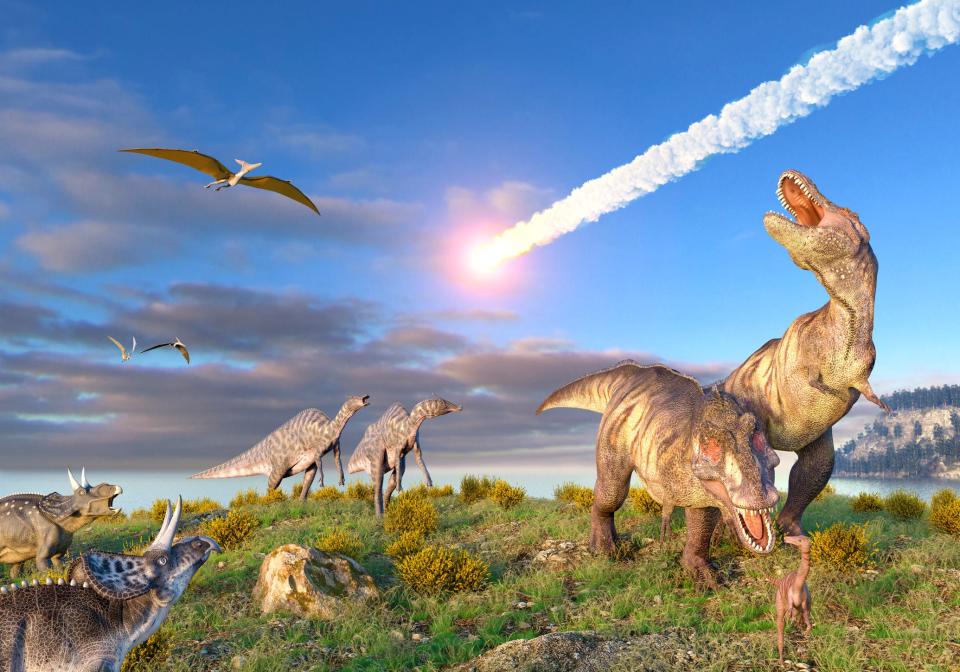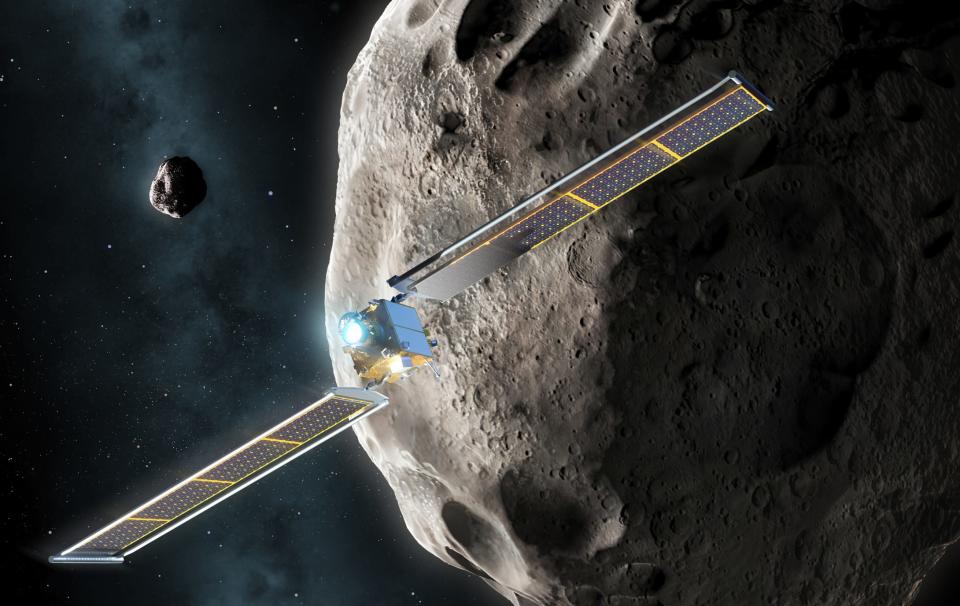-
NASA works with a worldwide coalition of astronomers to find and track dangerous asteroids.
-
NASA already has a plan in place to warn the public in the event of an impending dangerous asteroid impact.
-
Whether it can save the Earth from such a disaster is a matter of timing.
Dinosaurs had no warning when the Chicxulub impactor, a six-mile-wide asteroid, crashed into Earth 66 million years ago.
If an asteroid of this size hit Earth today, a shock wave two million times more powerful than a hydrogen bomb would destroy forests and trigger a tsunami. A seismic pulse equal to a magnitude 10 earthquake could level cities. Long after the impact, a cloud of hot dust, ash, and steam will block out the sun and plunge the Earth into freezing cold.


But at least we would know it would probably arrive ahead of time. And if NASA has anything to say about it, we might even be able to prevent the apocalypse.
NASA’s Planetary Defense Coordination Office is charged with finding, monitoring and assessing the risk associated with potentially hazardous asteroids in our solar system.
“We definitely want to find them all before they find us,” he said. Lindley JohnsonChief Program Manager of the Planetary Defense Coordination Office.
To do this, NASA is working with a global coalition of astronomers called the International Asteroid Warning Network (IAWN).
So what would they do if an apocalyptic asteroid attack headed towards Earth?
An international warning system
If a hazardous asteroid is heading towards Earth, IAWN has procedures in place to notify the public.
Party members who first detected the threat would share their observations through the IAWN network to verify their findings and assess the danger.
Once all parties agreed that Earth should be ready for impact, NASA would send an alert.
“I don’t have a red phone on my desk or anything,” Johnson said. “But we have formal procedures to ensure that a serious impact is reported.”
If the asteroid was heading towards the United States, NASA would notify the White House and the government would issue an official statement to the public. If it were large enough to pose an international threat, IAWN would notify the United Nations Office for Outer Space Affairs.
Hunting for asteroids
An asteroid is considered “potentially hazardous” if it is larger than roughly 460 feet and intersects the Earth’s orbit at a minimum distance of 0.5 astronomical units, which is half the distance between the Earth and the sun.
There are about 2,300 potentially hazardous asteroids known out there, and roughly 153 of them are larger than 0.6 miles across. This is large enough to trigger a catastrophe when it hits Earth.
To find and track them, NASA and other IAWN partners are searching for new asteroids as well as tracking those that have already been discovered. All their observations are collected in a database at the Minor Planet Center.
IAWN has found more than 34,000 near-Earth asteroids so far. With enough observational data, NASA can confidently predict their orbits at least a century into the future, Johnson said.
There is a very slim chance potentially hazardous asteroid Bennu It could hit Earth in 159 years and trigger an explosion equivalent to 24 nuclear bombs. However, the chances of this happening are only 1 in 2,700. According to a study in 2021.
If Bennu heads for Earth, NASA has a few tricks up its sleeve to defend our planet.
Defending the Earth
According to Johnson, IAWN often catches approaching asteroids long before they become an immediate threat to Earth. But NASA would need at least five to 10 years’ notice to prevent apocalypse from an approaching asteroid.
In 2021, NASA launched its first planetary defense test mission. He crashed an uncrewed spacecraft into an asteroid to shift its orbit away from Earth.


The mission was successful, and NASA plans to test more deflection techniques in the future. An evolving “gravitational tug” technique would send a spacecraft to stay near the asteroid, allowing gravitational interaction to knock the asteroid out of its orbit. NASA is also working on a technique that uses an ion beam to change an asteroid’s path.
But if the threat were to arrive in less than five years, NASA would not have time to divert the asteroid. It may then resort to destruction to minimize and disperse the impact.
If NASA only had a few months’ warning, then There’s not much he can do to save the world.
Fortunately, IAWN’s strategy is to find asteroids decades, if not centuries, before impact.
“This gives us plenty of time to try to do something about them while they’re still in space, thus completely avoiding any catastrophe here on Earth,” Johnson said.
Read the original article on Business Insider